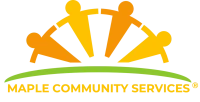Types Of Autism
Autism NDIS
Autism refers to a wide range of neurodevelopmental disorders
Understanding the unique challenges presented by each type of Autism will guide you in helping your child cope with the disorder.
There are five major types of Autism:

Asperger’s Syndrome
Although the term Asperger’s syndrome was quite common before 2013, the term is actually no longer used by medical professionals. It has since been reclassified as level 1 Autism Spectrum Disorder by the DSM-5 diagnostic manual. Still, Asperger’s syndrome may be used informally — in fact, Autism communities use it more often than level 1 spectrum disorder.
A child with level 1 spectrum disorder will have above average intelligence and strong verbal skills but will experience challenges with social communication. In general, a child with level 1 Autism Spectrum Disorder will display the following symptoms:
- Inflexibility in thought and behaviour
- Challenges in switching between activities
- Executive functioning problems
- Flat monotone speech, the inability to express feelings in their speech, or change their pitch to fit their immediate environment
- Difficulty interacting with peers at school or home
Rett Syndrome
Rett syndrome is a rare neurodevelopmental disorder that is noticed in infancy. The disorder mostly affects girls, although it can still be diagnosed in boys. Rett syndrome presents challenges that affect almost every aspect of a child's life. The good thing is your child can still enjoy and live a fulfilling life with the proper care. You can have family time together and provide support to allow the child to do what they enjoy.
Common symptoms of Rett syndrome include:
- Loss of standard movement and coordination
- Challenges with communication and speech
- Breathing difficulties in some cases

Childhood Disintegrative Disorder (CDD)
Childhood disintegrative disorder (CDD), also known as Heller's syndrome or disintegrative psychosis, is a neurodevelopmental disorder defined by delayed onset of developmental problems in language, motor skills, or social function. A child experiences normal development in these areas only to hit a snag after age three and up to age 10. The developmental loss can be very heartbreaking for parents who had no idea their child had Autism challenges all along.
The cause of CDD is unknown though researchers link it to the neurobiology of the brain. Childhood disintegrative disorder is more common in boys. Out of every 10 cases of the disorder, nine will be boys, and only one will be a girl.
In CDD, the child will have normal development up to the time when the disorder starts, and regressions suddenly start to occur in more than two developmental aspects of their life. The child may lose any of the following skills and abilities:
- Toileting skills if they had already been established
- Acquired language or vocabularies
- Social skills and adaptive behaviours
- Some motor skills

Kanner’s Syndrome
Kanner’s syndrome was discovered by psychiatrist Leo Kanner of John Hopkins University in 1943 when he characterized it as infantile Autism. Doctors also describe the condition as a classic autistic disorder. Children with Kanner’s syndrome will appear attractive, alert, and intelligent with underlying characteristics of the disorder such as:
- Lack of emotional attachment with others
- Communication and interaction challenges
- Uncontrolled speech
- Obsession with handling objects
- A high degree of rote memory and visuospatial skills with major difficulties learning in other areas
Pervasive Developmental Disorder – Not Otherwise Specified (PDD-NOS)
Pervasive Developmental Disorder – Not Otherwise Specified (PDD-NOS) is a mild type of Autism that presents a range of symptoms. The most common symptoms are challenges in social and language development.
Your child may experience delays in language development, walking, and other motor skills. You can identify this type of Autism by observing the child and noting what area the child displays a deficit in, such as interacting with others. PDD-NOS is sometimes referred to as “subthreshold Autism,” as it is a term used to describe an individual that has some but not all symptoms of Autism.
Managing the different types of Autism
Management of Autism depends on the type of Autism and the severity of symptoms. For instance, mild types of Autism such as level 1 Autism Spectrum Disorder can be managed through behaviour modification or social training while individuals with Rett syndrome would require more substantial support like physical or occupational therapy.
Some forms of Autism require behaviour modification and other additional support, often facilitated through programs like NDIS for autism. You may be required to change your child's diet to avoid preservatives, gluten, and artificial sugars. Another example is adding food colouring to different foods in a meal to encourage your child to improve their visual skills as they eat. Your family doctor will guide you on the specific treatment options that will best serve your child.

The Maple Commitment
Enquire Today
Whether its a query about the services we provide, or just a general enquiry, we would love to hear from you!

